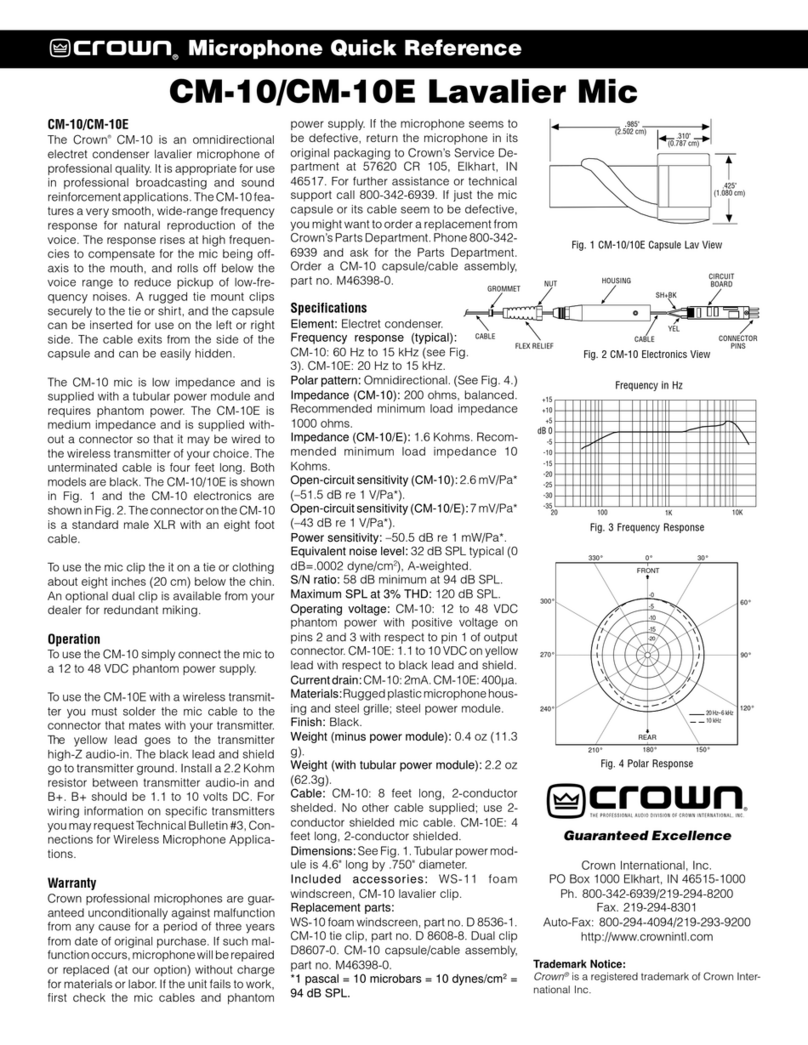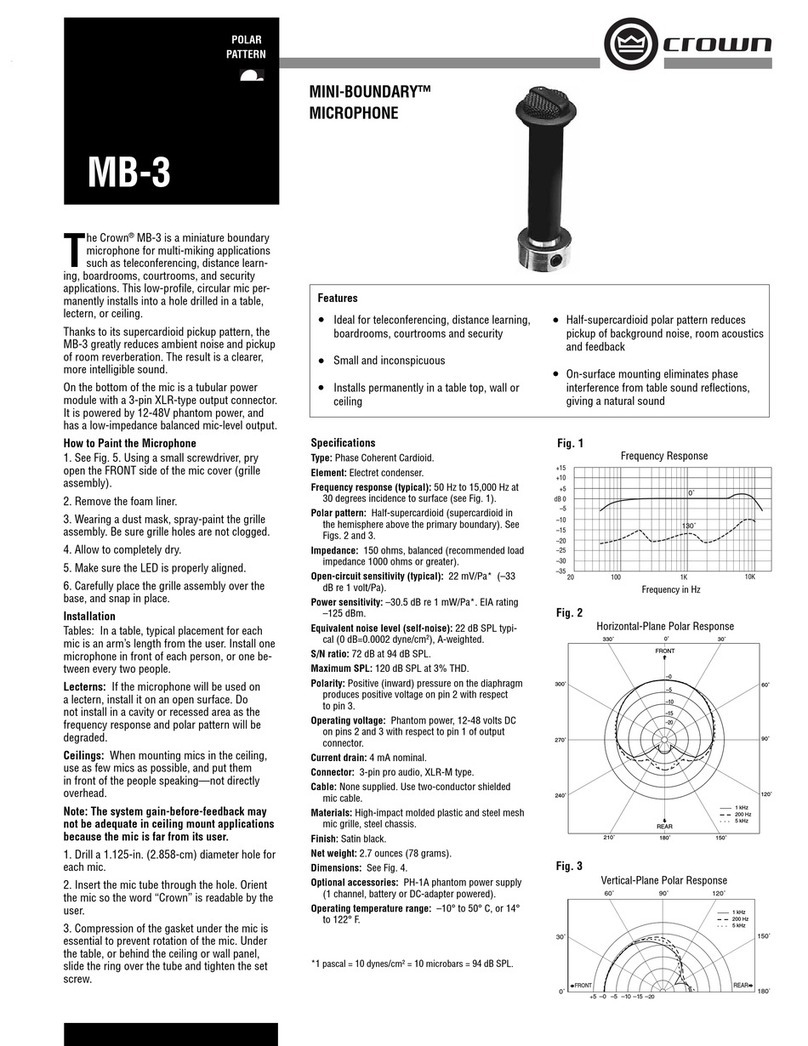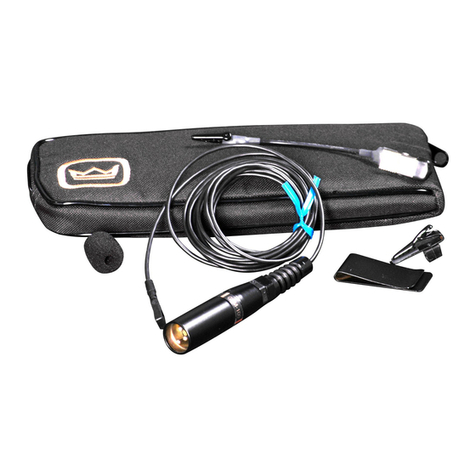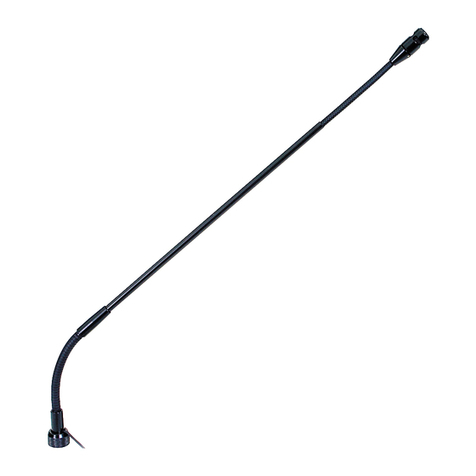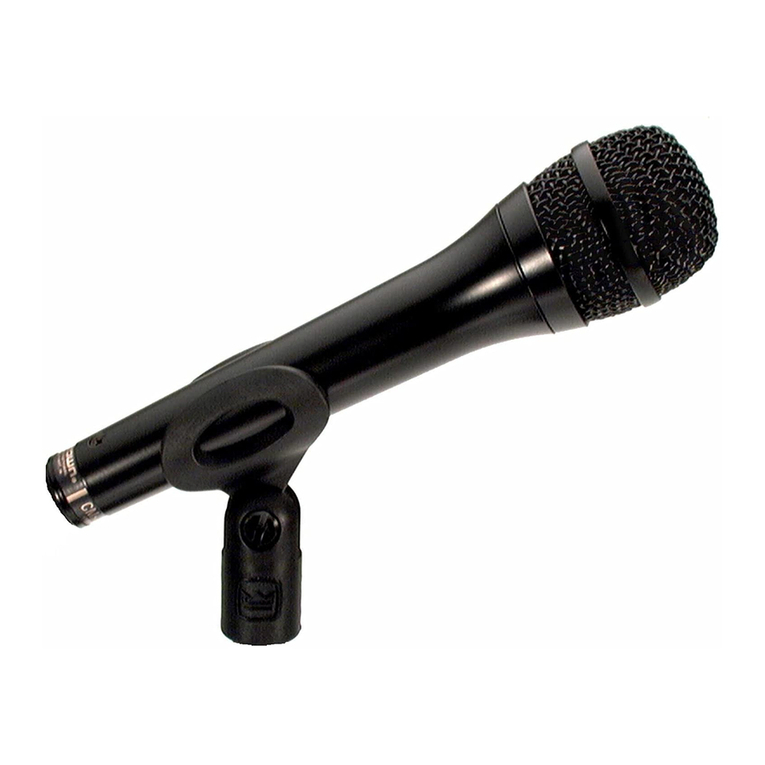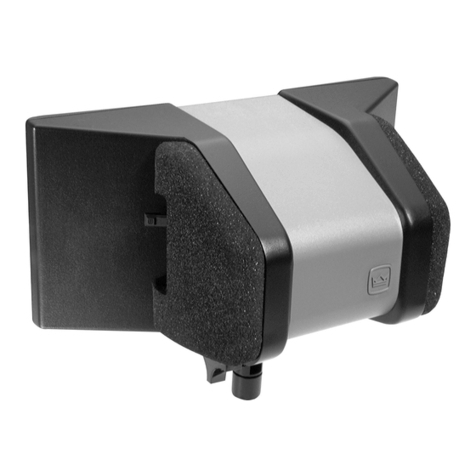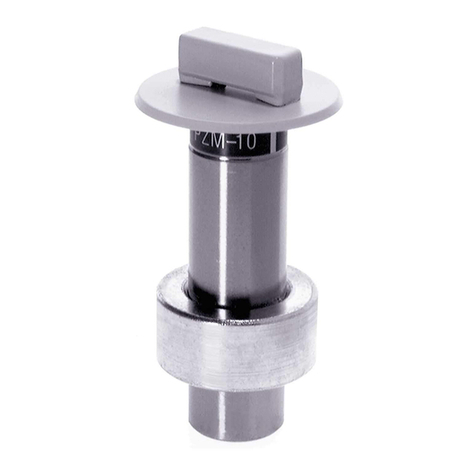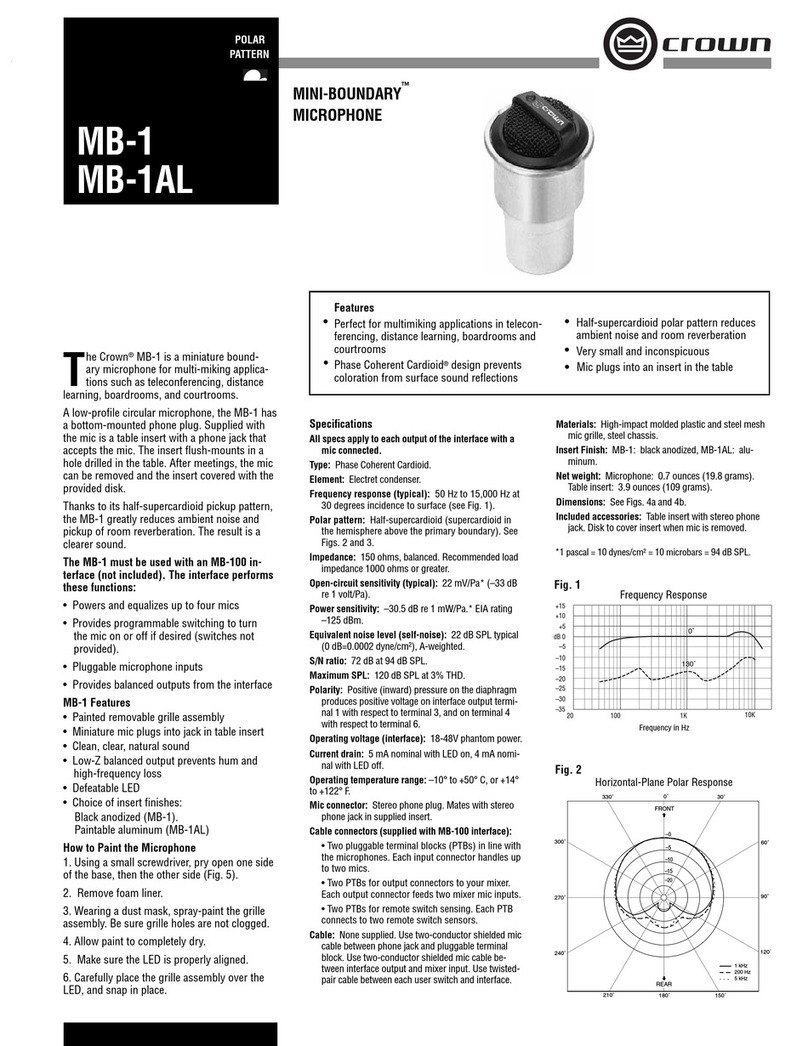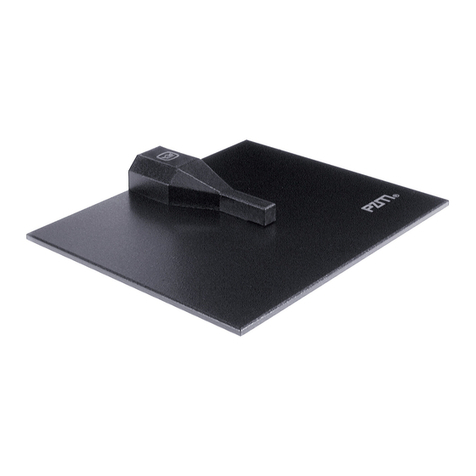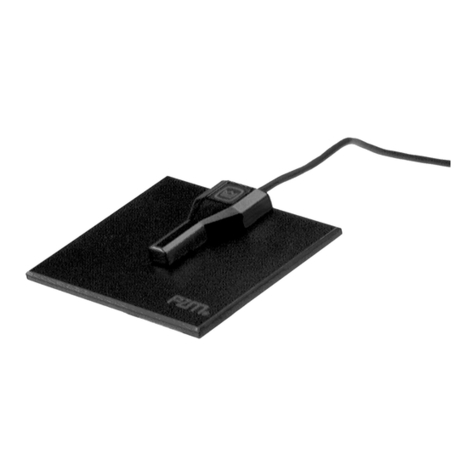
Both the 3LVR and the 3LV includes built-in clip which fastens to fabric or any other thin support.
Neckties or lapels are ideal mounting surfaces. Because of pressure-zone properties and sensitivities
of the PZM design, either mike can be mounted under neckties or other parts of clothing with little loss
of signal quality or clarity.
The PZM-3LV [now the CM-10] is now available from Crown inventory, and demo units have been
sent to dealers. The 3LVR is expected to go into production in August, with literature for both units
available at about the same time.
PZM CHALLENGE 1982
We are pleased to devote much of this issue of
PZMemo
to reporting on the 1982 PZM Challenge
contest which was developed by Crown as another way (in addition to
PZMemo
) of sharing PZM
technology.
The beginning
On February 1,1982. Crown mailed to all names on the
PZMemo
mailing list, to all PZM dealers, and
to editors of professional audio magazines a notice of the PZM Challenge, which was actually two
contests. The “Open” Contest could be entered by anyone except Crown employees and their fami-
lies. The other was a Crown “Dealer” contest, open only to Crown dealers and their employees.
Entrants were asked to submit excerpts from original stereo recordings made using two or more PZM
microphones as the principal pickups.
The categories
Three categories were established in each contest: classical, popular and environmental sounds.
Unfortunately, no entries were received in the environmental category: we can only speculate that
PZM users have been having too much fun recording musical events to pay attention to sound effects.
Prizes were established for each category in each contest, with a grand prize to be selected in each
contest. Provision was also made for honorable mentions to be awarded to those entries which, in the
opinion of the judges, were of more than average interest.
39 entries
The contest closed on May 1, 1982. with a total of thirty-nine entries received. Each entrant received a
T-shirt decorated with a PZM Challenge emblem. The entries were well distributed among dealer and
open, popular and classical.
The judging
Judging took place on May 6, 1982, in a room especially equipped for accurate playback, with the
speakers carefully positioned and equalized. Special care was taken to prevent the judges from know-
ing whether entries were submittted on cassette or reels. It is interesting to note that no cassette entry
won prizes or honorable mention.
The judges were:
Greg Bogantz, Engineer, RCA Records, Indianapolis. IN. Greg is in charge of disc mastering technol-
ogy for RCA and has spent many years of careful listening and engineering in the recording field. He
is a graduate of Purdue University.
Michael Stoll, President, Reproductions Technology, Inc., Elkhart, IN. Mike is the founder of RTI, a
manufacturer of industrial reel-to-reel tape recorders, and a recording engineer with several discs to
his credit.
Robert J. Pickrell, Manager, Elkhart County Symphony Association, Elkhart, IN. Bob has been in-
volved with the production of musical events for most of his adult life and is currently in his 13th year
as manager ofthe Elkhart County Symphony Association. He is a graduate of Chicago-Conservatory
College. Chicago, Illinois.
The criteria
The basic criterion for judging was the perception by the judges of the fidelity of the recording process.
Given the musical production and the aims of the recording engineer, did the recording provide a
faithful rendition of what was actually going on during the performance? Music content and the quality


